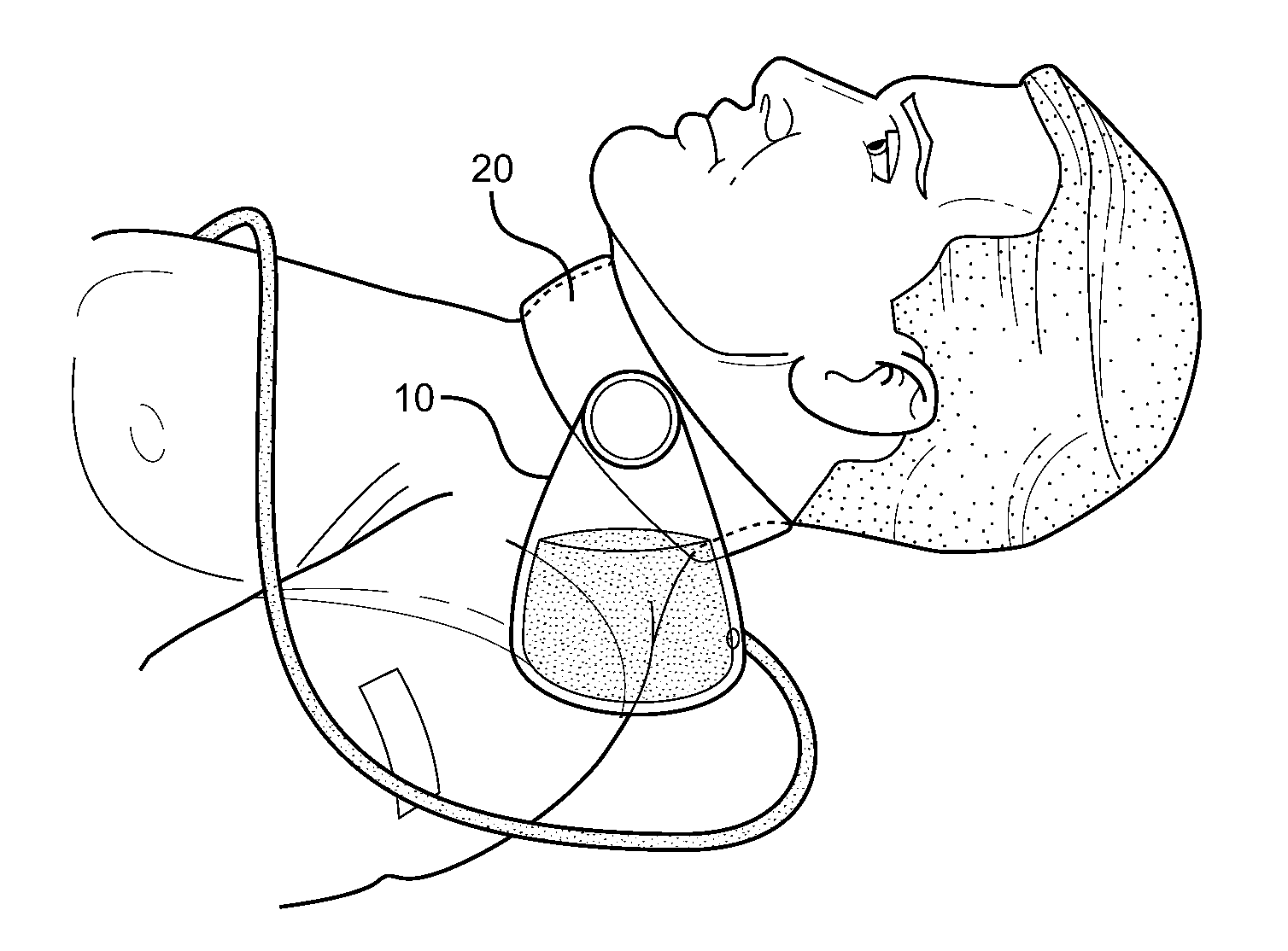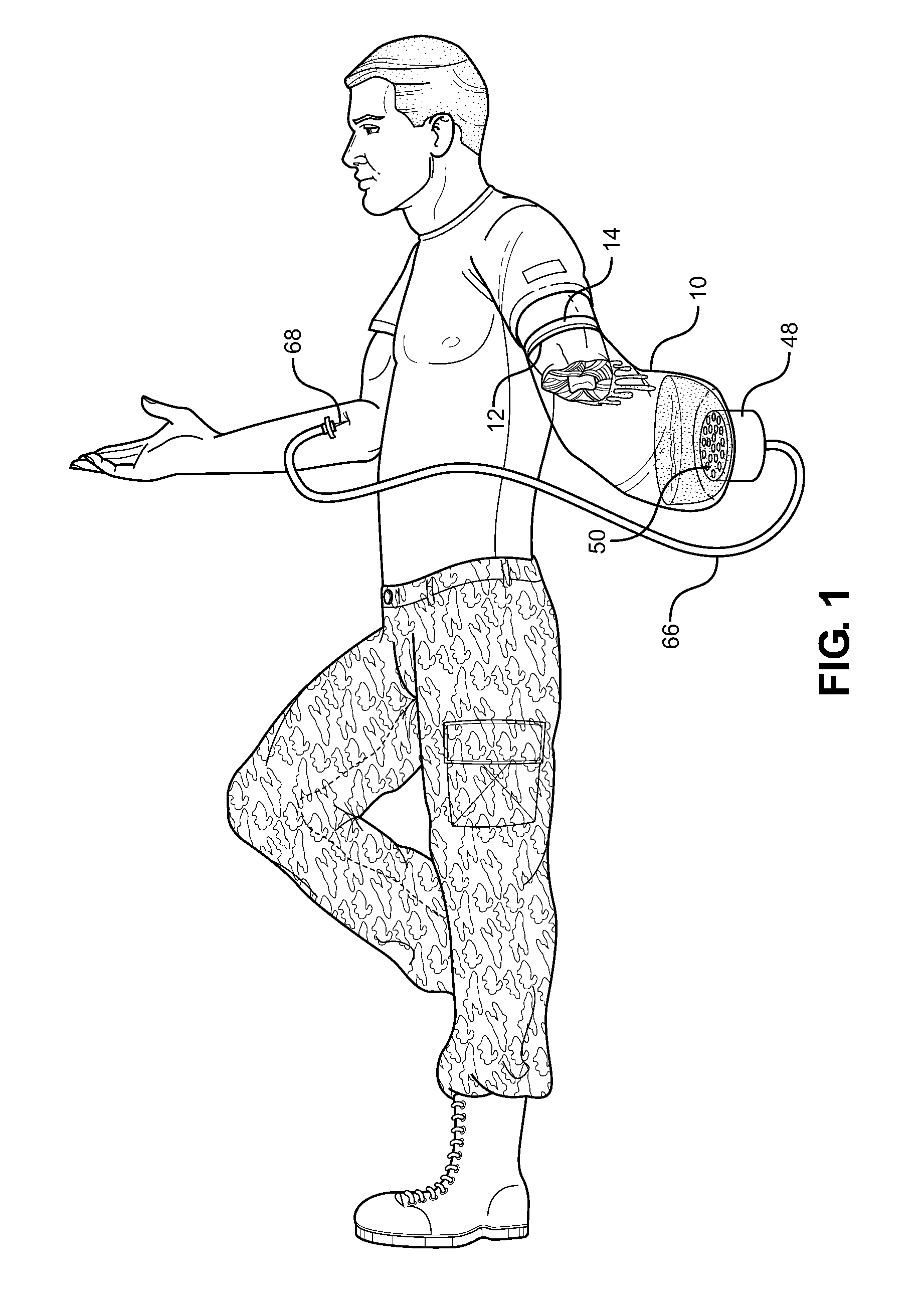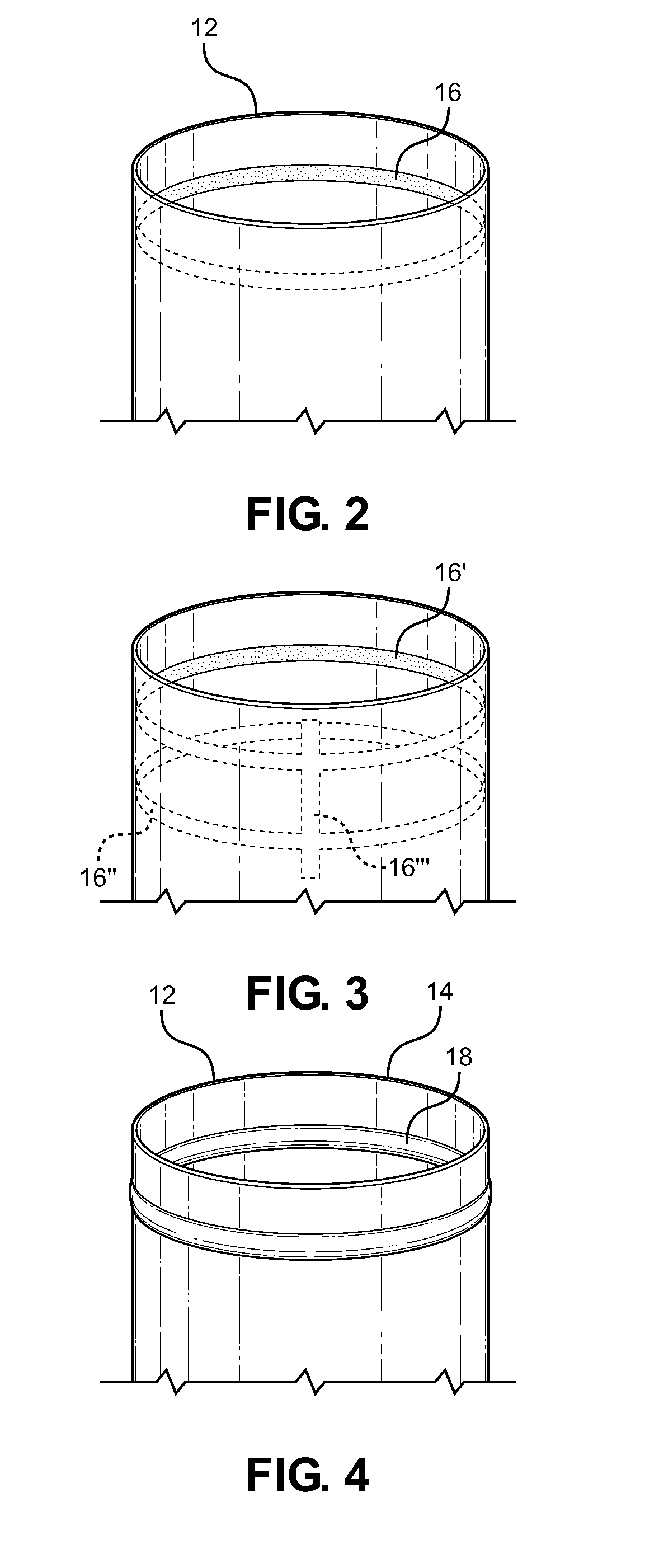Exsanguination preventing device
a technology of exsanguination and device, which is applied in the direction of therapeutic cooling, gravity drainage system, other medical devices, etc., can solve the problems of insufficient arrest of blood loss of injured soldiers, inability to prevent blood loss, and death of soldiers,
- Summary
- Abstract
- Description
- Claims
- Application Information
AI Technical Summary
Benefits of technology
Problems solved by technology
Method used
Image
Examples
Embodiment Construction
[0045]Detailed descriptions of embodiments of the invention follow. It is to be understood, however, that the present invention may be embodied in various forms. Therefore, the specific details disclosed in the present description are not to be interpreted as limiting, but rather as a representative basis for teaching one skilled in the art how to employ the present invention in different systems or manners.
[0046]In its most basic configuration, an exsanguination preventing device according to the invention includes three major components: a collection system receiving blood from a patient; a pump, moving the blood; and a conduit, receiving the blood from the pump and delivering the whole, autologous blood back to the patient through an insertion device. Various interchangeable attachments may also be provided. All components are sized such to make the exsanguination preventing device portable in a pocket of a garment or of a backpack of a soldier.
[0047]The first major component is ...
PUM
 Login to View More
Login to View More Abstract
Description
Claims
Application Information
 Login to View More
Login to View More - R&D
- Intellectual Property
- Life Sciences
- Materials
- Tech Scout
- Unparalleled Data Quality
- Higher Quality Content
- 60% Fewer Hallucinations
Browse by: Latest US Patents, China's latest patents, Technical Efficacy Thesaurus, Application Domain, Technology Topic, Popular Technical Reports.
© 2025 PatSnap. All rights reserved.Legal|Privacy policy|Modern Slavery Act Transparency Statement|Sitemap|About US| Contact US: help@patsnap.com



